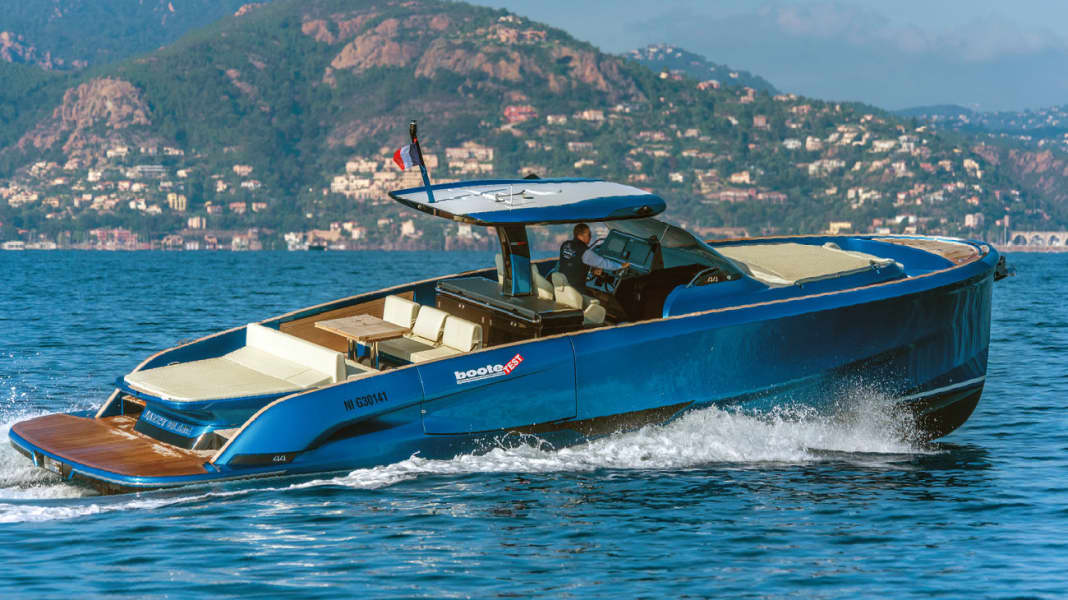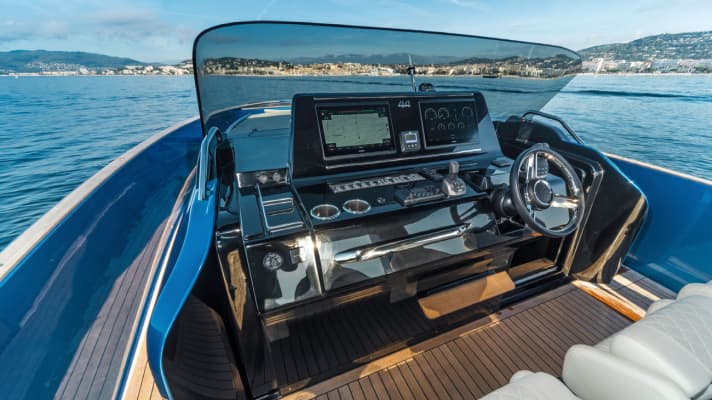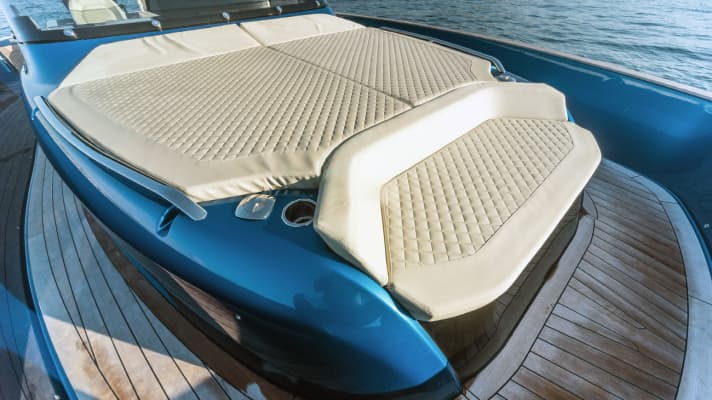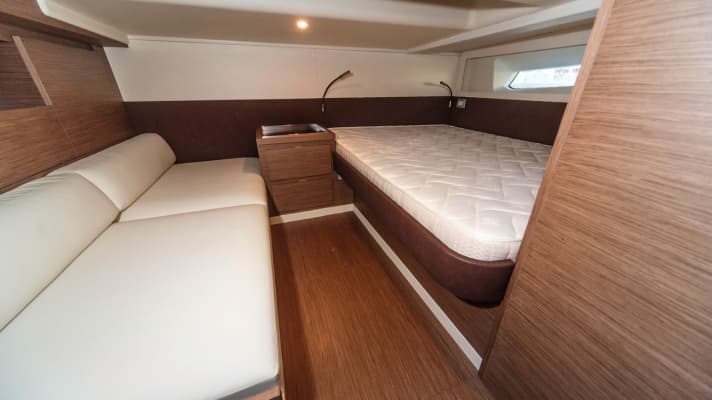
The Italian luxury shipyard Solaris is very dynamic in its new developments and has been producing top-class motor yachts since 2008. The production of sailing yachts dates back to the 1970s. Following rapid growth, the new factory in Aquileia on the northern Adriatic has been building yachts since 2018. The Open line is currently being regularly expanded. The 48 Open (test in BOOTE 3/2021) was the first model in the series to win its class in the "European Powerboat of the Year 2020" award. Its little sister 44 Open, which was presented in Cannes in 2021, is already on the list of nominated boats for 2022, and a 60 Open has already been announced. Of course, we couldn't pass up the opportunity to subject the new 44 Open to an extensive test.

The shipyard originally modelled its motor yachts on classics such as the American lobster boats. The current models show a much more modern interpretation of the lines. The sailing characteristics, on the other hand, remain closer to the original. The Open line is based on a walk-around concept. The focus is therefore on enjoying the elements with plenty of sunshine on the main deck. In other words, these are fair-weather boats. The fun in the sun starts at the stern with an optional enlarged bathing platform. The owner also chose the option of having an electric gangway fitted and dispensed with the manual bathing ladder that is otherwise always present. A safety flaw that we cannot understand. There is a large sun lounger next to it, which then leads directly into a dinette for six people. The folding table is an option. The wide gangways on both sides allow easy access to the entire main deck. High sides and handrails ensure passenger safety in many, but not all, critical areas. The lack of rear doors is also not convincing. An open-air galley with washbasin is located in front of the seating area. Refrigerators, icemakers and an induction hob or electric grill can be fitted as an option. The construction is located behind the three individual seats at the helm and also supports the T-top. When stationary, a slight swinging of the roof was noticeable, but this disappeared when travelling.

The central control station has a 12-inch display, with a further one fitted on request. Important functions are operated directly via switches. A manual compass complements the electronic navigation. The acrylic glass windscreen provides good wind protection, but weather protection naturally has its limits with such a design, and there are no windscreen wipers. On the foredeck, another spacious sun lounger awaits crew members. In front of it is another upholstered sofa with an unobstructed view over the bow. The cabins are accessed via the companionway on the starboard side of the centre console. There are various options here depending on the owner's wishes. The test boat was equipped with a double berth in the bow; alternatively, a seating group can also be ordered here. A complete wet room with shower is always fitted amidships. Behind this is another underfloor cabin, which can be ordered open or closed. Here you can choose between the option with double berth and sofa and the variant with two single berths. Slatted frames for ventilating the mattresses are not installed. The headroom is between 1.90 and two metres everywhere, even in a small area of the rear cabin.

Let's move on to the technology. All components are fitted in an exemplary manner. Two electric and one manual bilge pump, fire extinguishers and manually and electrically switchable fuel taps ensure safety. There is no hatch for emergency exits. The clearly organised switch cabinet for the entire electrical system is easily accessible and installed directly on the companionway. The test boat is fitted with the top-of-the-range engine in the form of two Volvo Penta D6 IPS 650 pod drives, each with 353 kW (480 hp), which are installed for a basic price of €741,727. With all the extras, however, the test vehicle was a good €200,000 more. IPS 500 or 600 are optionally available. After rapid acceleration, stable planing is reached after nine seconds at 2700 rpm and 20 knots. It takes a total of 17 seconds to reach the top speed of 34.2 knots at 3640 rpm. The fact that the maximum speed was not quite reached was due to the dirty underwater hull. Manoeuvring is no problem thanks to the joystick, but can also be done well manually. The straight-line stability at slow speeds is very good. Due to the drive, fast full circles are only possible with a large diameter of around ten boat lengths. The hull dives smoothly into the waves, ensuring a comfortable ride. We determine a comfortable cruising speed of 25.4 knots at 3000 rpm. The engines draw 117 litres per hour from the 1200-litre reservoir, which, after deducting a 15 percent reserve, allows a not particularly large range of 220 nautical miles. The nearest petrol station should therefore always be in sight on longer trips.
Need more information? You can find the test of the Solaris Power 44 Open with further pictures, measurement results and full evaluation in BOOTE issue 01/2022 from 15 December 2021 at newsstands or online at Delius Klasing Shop.

